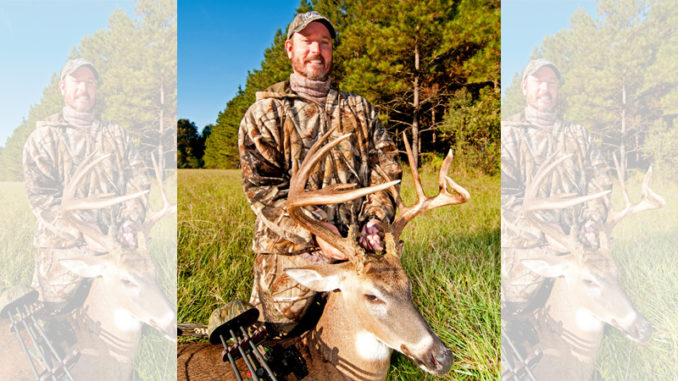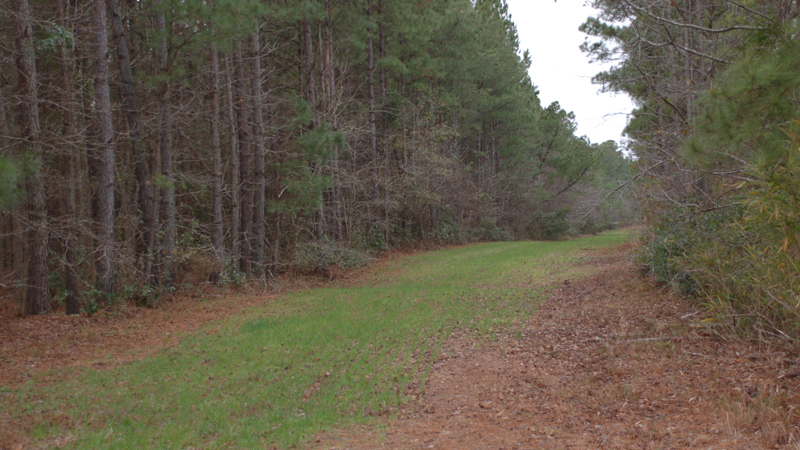
Watch the wind, make the right kind of noise and be ready for a shot at that special buck when he lets his guard down.
South Carolina’s deer season is one of the longest and most liberal in the country. For states with seasons that last only a few weeks, they are usually structured to align with the peak of the rut. And that’s for good reason — bucks let their guard down and are most vulnerable when they make breeding their top priority.
Even though South Carolina hunters get four to five months to fill their freezers, the brief period around the height of the rut near the end of October gives them the best odds for cashing in on a trophy buck. And knowing exactly where to be when that time comes is critical.
Boy Scouts make good hunters because of their motto: “Be Prepared.” If there was ever a time to be prepared, the period just before the rut begins would be it. That’s especially true for hunters like Jeff Kirkley of Marion County, who said a network of trail cameras is a good place to start.
Trail cameras are essential tools
“The most-critical technique to prepare for the rut is having multiple trail cameras out to find the deer you want to harvest,” he said.
Hunters should deploy trail cameras as early as possible to see what kind of deer are frequenting an area. You can’t assume that bucks left over from the previous season are still bedding in the same briar thickets and traveling through the same saddles.
Because bucks roam out of their comfort zones during the rut, their home territory at season’s end may be quite a ways from where they roamed before the previous season. And even though many bucks will leave their summer habitat when the rut cranks into high gear, they often check on their local does before hitting the road. So it’s critical to be in the right spot in the first couple of weeks of the rut.
Keep a watch on the does
In the Upstate, Ben Lecroy of Pickens spends months preparing for deer season. He monitors his properties for mature bucks with trail cameras, but will center his attention on the location of the does.
“Keeping track of the does is my main strategy,” he said. “The bucks will be close to the does when the rut begins.”
As the rut fires off, does will always attract bucks of every age class. Lecroy makes sure to keep as many does fed and happy to make sure the bucks stick around.
“Once the rut is underway, does become my live bait, and (they are) off-limits to shooting,” he said.
Lecroy believes in having a solid plan going into the season. He will have early season stands specifically for doe harvest. And he will create opportunities to harbor does in distinct areas within or adjacent to a typical buck area to get a mature animal into range.

“We plant several small food plots of clover close to thick cover in efforts to create places to hunt specifically during the rut where the does and mature bucks feel comfortable using,” he said. “I will not disturb any of these areas early in the season.”
Larger, more permanent food plots are also great places to hunt during the rut. Lecroy plants a variety of food plots on his Laurens County property throughout the year to keep the deer fed and healthy. And most importantly, it keeps them on his property.
Help your deer keep a consistent travel pattern
“If the primary food source doesn’t change, their travel patterns stay more consistent. And that makes them more predictable,” said Lecroy. He tries to never give his deer a reason to go elsewhere. This strategy increases his chances of pulling a good buck into range during daylight.
Beyond food plots, areas of solid, natural food can also be beneficial places to set up on during the first part of the rut, where human scent is generally less noticeable than in manipulated food plots. Lecroy checks out oak flats and oak ridges during the middle of the day during the season to see which areas are bearing heavy crops of acorns.
“A good acorn crop can trump the best food plots. Knowing where the pinch points and funnels are located leading to the oaks can be golden during the rut,” he said.
Again, the does are an important focus. And the best food sources — manipulated by man or of natural origin — will draw deer in on a regular basis. Kirkley focuses on doe movement heavily just before and during the rut.
Bucks will walk the same trails used by does during the rut
“Does bring the bucks out of hiding. I keep my eyes on specific trails that does use because the bucks will be doing the same thing,” he said.
Locating a good buck and his core area is still critical. After Kirkley locates a good buck, he will back off until ideal conditions develop. Mature bucks have been around the block a few times. And bumping a big buck once will educate them quickly.
“Too much hunting pressure will push off a mature buck,” he said. “I don’t even hunt some stands until the rut begins and when the time is right. I usually like the first cold front in October.”
Critical food sources and bedding areas of both bucks and does can be tricky locations to hunt over and prevent the spread of human scent. As a result, Kirkley will sometimes hunt in areas where he can sit up high and monitor long, open corridors. That way, he might catch a buck trolling for mates without introducing any human scent into the equation.
Power lines, field edges are great areas to hunt during the rut
“During the rut, I like to hunt stands I can see a good distance, like a power line or field edge,” he said.
As soon as the rut begins and does start perfuming the countryside with estrus aromas, bucks let their guards down. They start traveling looking for a willing mate, and these power lines and field edges are perfect places to intercept one.
Typically, field edges and power line right-of-ways will be littered with fresh scrapes. Kirkley increases his odds of pulling a big buck into his sights by spiking the existing scrapes. Multiple bucks use the same scrapes routinely throughout the breeding season and even during the course of a day.
“I have personally watched four bucks go to the same scrape in the same morning,” he said. “If you want to see a buck go crazy, pour a bottle of dominant buck urine in scrape, and it will drive them crazy and bring them in for a shot.”
Click here to read more tips that will help you bag a trophy during the rut.




Be the first to comment